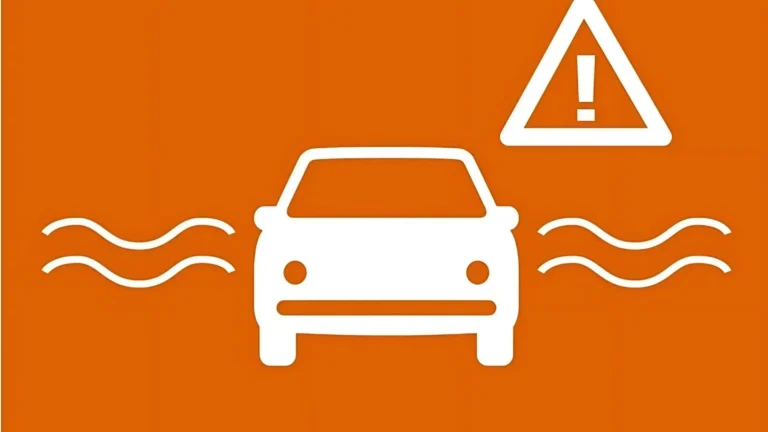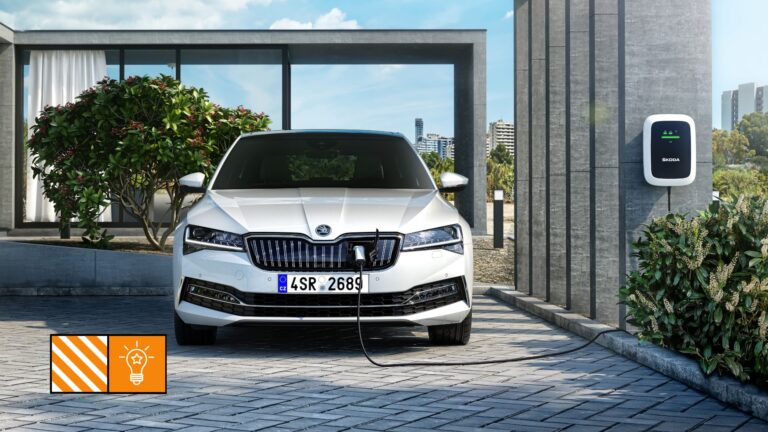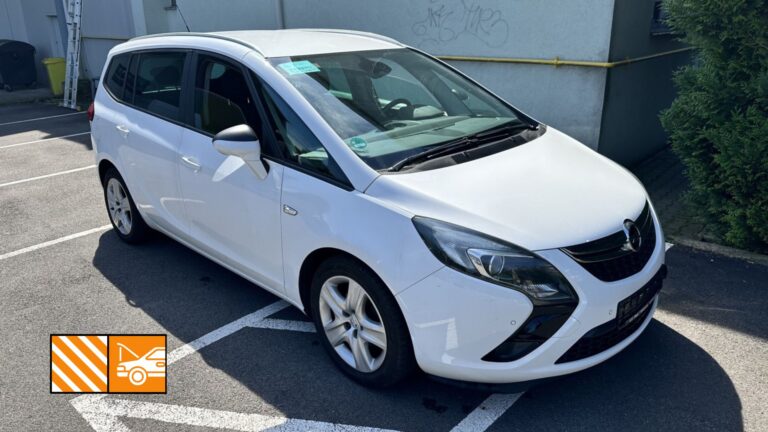Car Inspection Before Buying: A Guide to Inspecting a Used Car
- Advice and tips
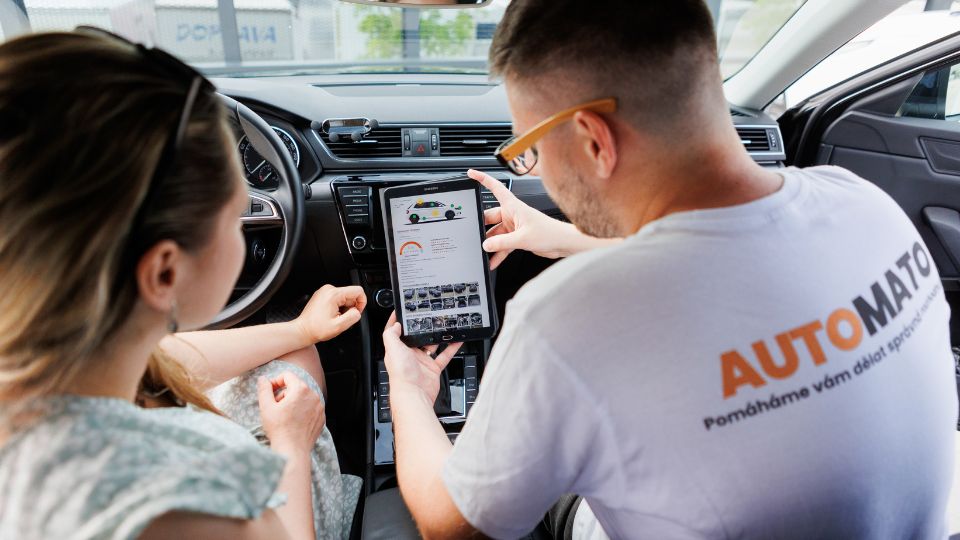
When you're looking for your next vehicle, one of the most important steps in the process is a pre-purchase inspection. This inspection can uncover potential problems that could have serious consequences in the future if not addressed properly. Whether you're an experienced motorist or a novice, this guide will give you everything you need to know about pre-purchase inspection of a used car.
First impressions: checking the car's exterior
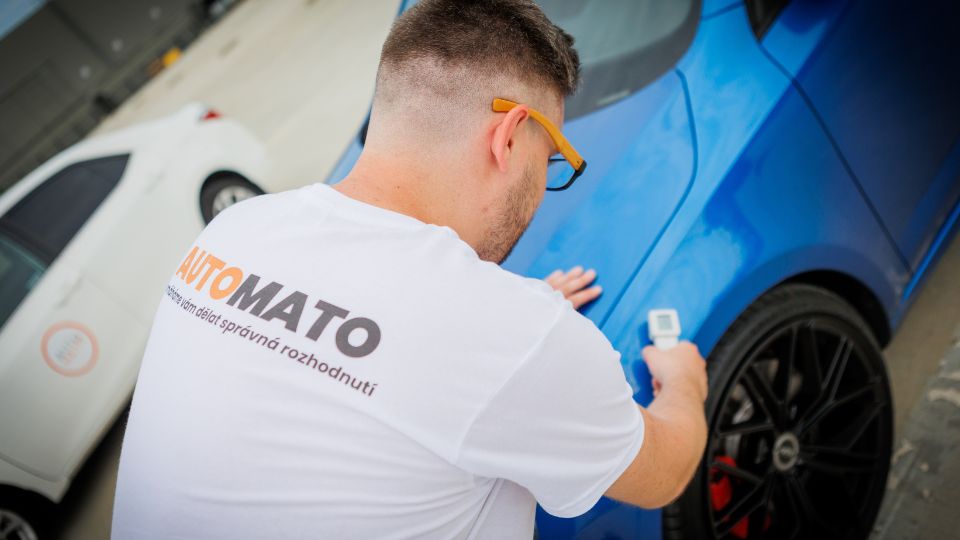
It all starts with a first impression. And the first step in inspecting a car before buying it is no exception. This stage involves a thorough external inspection of the car, where we don’t just focus on whether the car looks nice. It’s about much more than just aesthetics. The external inspection is like our first detective case, where we look for visible signs of damage – scratches, dents, rust, paint chips, all of these pieces of evidence can give us clues.
And here it begins true detective game. You need to look for things that are not immediately visible. Irregularities in the paintwork, such as ripples or variations in shade, can indicate hidden problems, such as a recent body repair. Consider cars that have been damaged in a car accident and then repaired. The repair may look good at first glance, but irregularities in the paintwork may indicate that under that new coat of paint there is evidence of more serious damage that can affect the safety and performance of the car.
Moving on to other important elements of the car, we check the lights – they should all be working properly without being scratched or damaged. Keep in mind that problems with the lights can indicate problems with the car’s electrical systems, which can lead to other problems in the future.
What about tires?
Are they wearing evenly? Are there any signs of punctures or other damage? Tires are literally our connection to the road, so any problem with them can indicate potential problems with the chassis or steering. For example, if you notice that the wear is greater on one side of the tire than the other, it could mean that the car has balance or suspension problems.
So you see, the first step in a pre-purchase inspection of a car, the exterior inspection, is much more than just a quick look at the car. It's our first chance detect potential problems and save you from future problems and costs.
Experienced technician – the best helper when checking a car before buying

Pre-purchase car inspection by an experienced technician. This is a thorough inspection of your potential car, which is carried out by our experts with all the necessary equipment. Our services are not just a routine inspection; they are a comprehensive assessment of the car's condition, which includes diagnostics, paint depth measurement, test drive and much more.
Do you have techniques? throughout Germany, the Czech Republic, Slovakia and so we are able to carry out this check within 24 hours. In our hands, your car is subjected to the most extensive check available on the market. We use leading diagnostic tools and paint depth measurement equipment to ensure maximum accuracy and reliability of our results.
Moreover, our test drives are not just ordinary drive-throughs. They are detailed checks, during which our experts carefully monitor and analyze the car's behavior on the road. From brakes, to gear shifting, to cornering stability – we don't miss anything.
We can help you save money and avoid hassle by identifying potential problems before you buy your car. We believe that our Pre-Purchase Car Inspection service is the best investment you can make before buying a used car. Whether it's a family car or a luxury sports car, our services are here to help you make an informed and safe decision.
Don't you dare to inspect your desired car? Use our experienced technician and you are safe!
Detailed car inspection before buying: Interior inspection as the next step
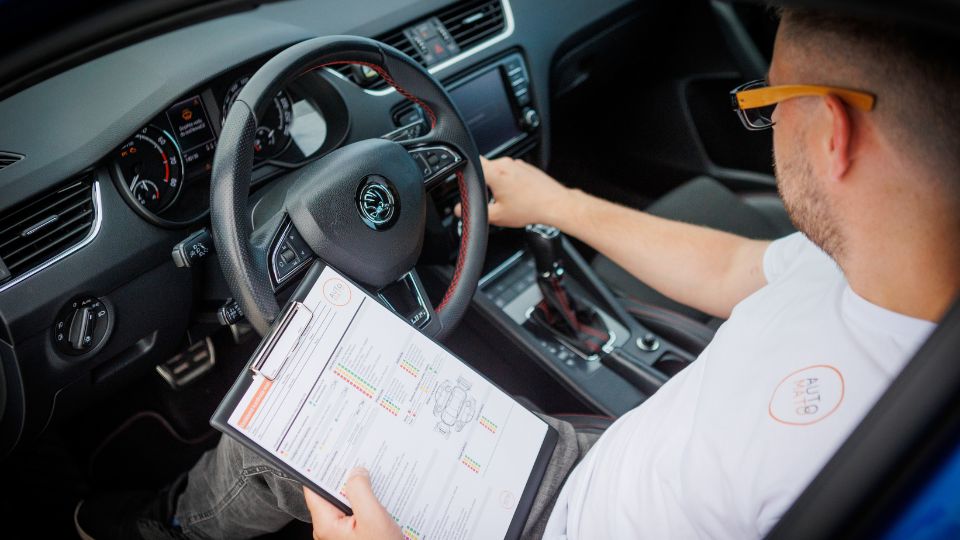
After we’ve done a thorough exterior inspection, it’s time to take a look inside the car. The next step in the pre-purchase inspection process is to inspect the interior. This step is just as important as the first, as the interior of the car can reveal a number of potential problems that might otherwise remain hidden.
When you step inside a car, the first thing you should look for is signs of excessive wear. For example, if you see that the pedals are very worn, but the seller claims that the car has low mileage, this could be a red flag. The pedals should match the stated mileage – a car with low mileage should not have significantly worn pedals.
Damage may also indicate recent problems or repairs. For example, if the steering wheel or seats are newly upholstered, this may indicate that the seller is trying to cover up wear or damage. Next, check the condition of the dashboard and controls. Controls such as turn signals, wipers, and lights should work flawlessly. Also test the audio system, air conditioning, and other comfort features to make sure everything is working properly.
Seats and carpets
Another important aspect to check before buying a car is the condition of the seats and carpets. Imagine getting into your car and the seats are very worn out and the carpet has cigarette burns or water damage. This could indicate that the car has been heavily used, which can affect its overall lifespan. Additionally, if these items are very worn out, it could mean that you will soon have to invest in repairing or replacing them.
So when you get into the car you want to buy, take the time to inspect the interior. Remember that it's important to not only evaluate a car by how it looks on the outside, but also by how you feel inside.
Car inspection before buying: Looking under the hood as the next key step
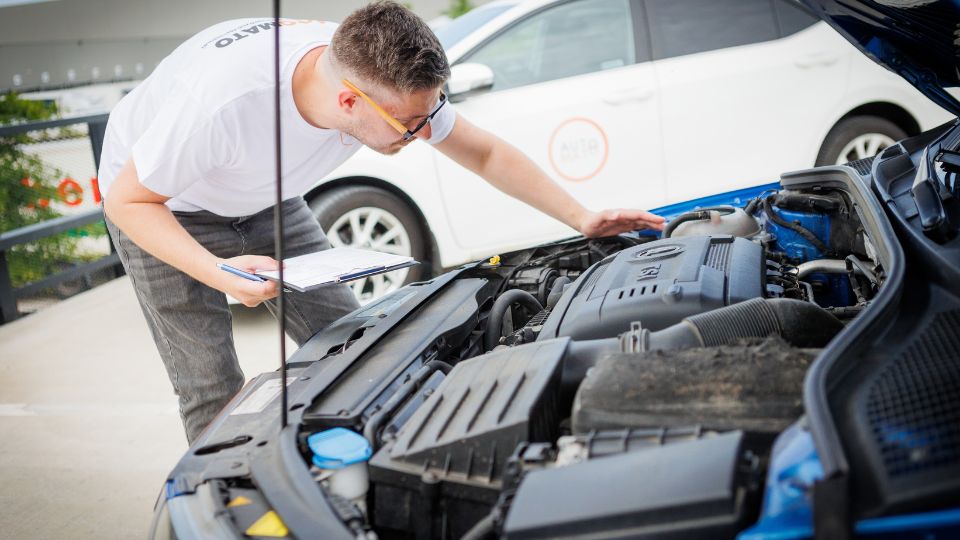
After a visual inspection of the exterior and interior, the next important step comes: a look under the hood. This stage of the car inspection before buying is essential, as this is where the heart of the car is hidden – the engine. And the condition of the engine and other components located under the hood can have a decisive influence on the overall condition of the car and its reliability.
When you open the hood, there are a few key elements you should look at. The first one is the engine. Check that the engine is clean and that there are no signs of oil or other fluid leaks. If there are any unusual noises in the engine or if the engine seems dirty, it may mean that the car has not been serviced regularly. Also, be sure to check the wiring and cables for damage or wear.
And what about oil?
Next, you should check the condition of your oil. The condition of your oil is a key indicator of the overall health of your engine. If the oil is too dirty or if there is too little oil, these can be signs of problems to come. The oil should be clean and light gold, if it is dark and dirty, it may mean that the car needs an oil change or that the engine is worn out.
Don't forget to check your coolant, too. Low coolant levels can cause your engine to overheat, which can lead to serious and costly damage.
Another important element to check is the timing belts. They are important for the proper operation of the engine and their wear or damage can lead to serious problems. For example, a broken timing belt can cause serious engine damage.
For example, consider a car that appears to be in good condition inside and out, but when you look under the hood, you discover an oil leak. This could indicate a serious problem, such as a blown oil seal, which can lead to an expensive repair.
Don't want to take risks when buying a used car? Take advantage of our professional inspection by an experienced technician.
Chassis – an essential part of checking a car before buying it

One of the most overlooked, yet essential parts of a pre-purchase inspection is the chassis. Your car's chassis plays a key role in its handling and can affect its safety and performance. So if you're planning to buy a used car, a chassis inspection should be on your list.
To start, inspect the chassis from the outside. Look for any signs of rust or damage. Rust can mean the car has been exposed to too much winter salt or has been in areas with high humidity. Damage can be a sign of a previous accident or lack of service.
Inspect the shock absorbers and springs carefully. If the shock absorbers or springs are damaged, it may mean that the car will not absorb shocks properly, which can lead to impaired driving characteristics. Since repairing or replacing these components can be expensive, it is important to determine their condition before purchasing.
Replacing brakes can be expensive
Another important step in checking the chassis is to inspect the brake system. Check the condition of the brake discs and pads. If the discs are too thin or if the pads are almost worn out, you will have to replace them, which means additional costs.
Also, notice if the car pulls to one side while driving, which could indicate a suspension adjustment problem or a brake problem.
When inspecting the chassis, don't forget the tires either. Even wear is a healthy sign, while uneven wear can indicate suspension setup issues, poor balance, or tire pressure issues.
Finally, if you have the opportunity, have your car inspected by a professional. Things like cracked or damaged seals, exhaust system problems, or steering issues can be difficult to spot without expert knowledge and the right equipment. By hiring a professional technician to inspect your car before you buy it, you can be sure that any potential problems will be uncovered.
Test drive – a key moment when checking a car before buying
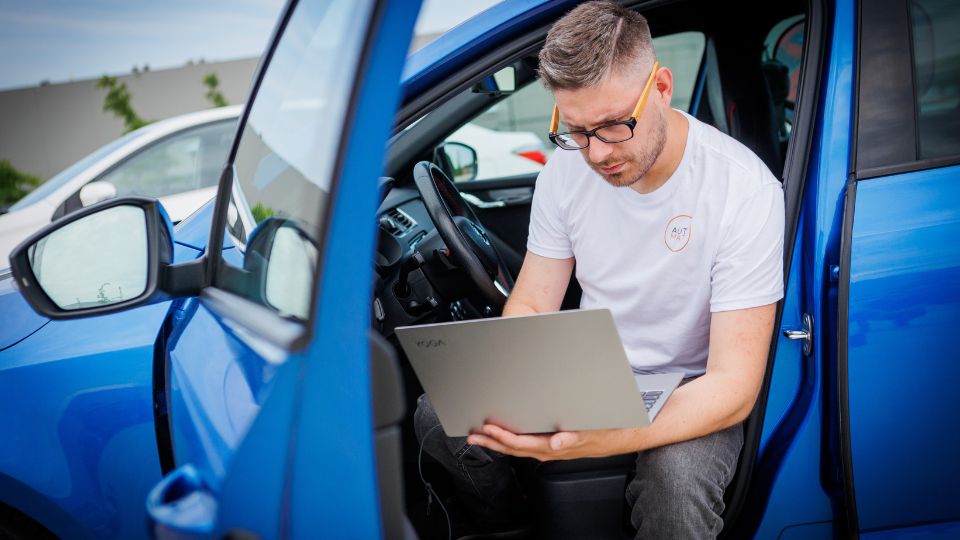
Once you've checked the exterior, interior, and under the hood, it's time for the next and crucial step in pre-purchase vehicle inspection - a test drive. This moment is essential for properly assessing how the car handles on the road and can reveal problems you wouldn't otherwise be able to spot.
In addition to checking how the car handles and responds, you should be vigilant and focus on a few key aspects. The first of these is the brakes. Test the braking system thoroughly – the brakes should respond smoothly and effectively. If you feel that the car is braking unevenly or that the pedal is depressed too far, these may be signs of wear or another problem.
The most expensive part is shifting and clutch/transmission repair.
Next, focus on the gearshift. The gearshift should be smooth and without any jerking. If you feel any jerking or noises when shifting, it could indicate a problem with the transmission. Remember, transmission repairs can be very expensive.
Also, try the car in corners. The car should remain stable and behave predictably. If you feel the car pulling to one side or if the steering vibrates, this could be a sign of a problem with the chassis or steering system.
It's also important to listen when you test drive. Pay attention to any unusual noises. Rattling, pounding, or clicking can be warning signs that something is wrong with the car.
For example, if you hear a clicking sound while turning during a test drive, this could indicate a problem with the CV joint, which is a critical component of your wheel drive. Repairing such a problem can be expensive, so knowing this before you buy can save you money and stress in the future.
So remember that a test drive is not only about how the car feels on the road, but also about uncovering potential problems that could lead to future costs and complications.
Conclusion

Pre-purchase inspection is a key part of the used car buying process. Remember, if you are unsure about something, don't be afraid to ask for expert advice. If you have any doubts, it is always better to have your car professionally inspected than to face the consequences of expensive repairs in the future. Your safety and satisfaction with your new car is what matters most.
Follow us through our social networks, Don't miss any news.


